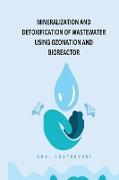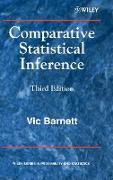MINERALIZATION AND DETOXIFICATION OF WASTEWATER USING OZONATION AND BIOREACTOR
BücherAngebote / Angebote:
The book is a technical publication that explores the use of ozonation and bioreactors in the treatment of wastewater. The book focuses on the processes of mineralization and detoxification, and how they can be achieved through the use of ozone and bioreactor technology. It may cover topics such as the principles and mechanisms of ozone and bioreactor treatment, the selection and design of ozonation and bioreactor systems, and the evaluation of their performance for the removal of various pollutants from wastewater. The book is aimed at researchers, engineers, and practitioners in the field of environmental engineering and water treatment, and provides practical information and guidance for the application of ozonation and bioreactor technology for the mineralization and detoxification of wastewater.
Since the 1800s, the commercial manufacturing of synthetic dyes has been practiced. With the
course of time, they've been tweaked to be resistant to physical and chemical changes,
as well as to persist for years without fading ..
Fabrics' durability has been enhanced due to various features, and the textile sector
has thrived in the recent years. However, such synthetic dyes are also resistant to
natural processes when they become part of the environment. The textile industry is one
of the leading industries in releasing polluted effluents, including dyes, salts, and
other organic complexes, in the soil and water bodies. It hence poses severe risks to the aquatic
lives and environment. Since only 50% of the applied dyes get utilized in the fabric, the rest is
released with huge volumes of water into aquatic bodies causing severe environmental hazards due to
their high pH, temperature, COD (Chemical Oxygen Demand), BOD (Biochemical Oxygen Demand) and
TOC (Total Organic Carbon) levels . Textile enterprises are typically located near the sea, owing to ease of
transportation. The hazardous effluents discharged by the industries pose a significant
threat to the marine ecosystem. It also substantially affects the photosynthesis of some
hydrophytes by inhibiting light penetration, lowering gas solubility and water quality
. It's challenging to get rid of these compounds which are now a threat
to the environment and workers in the textile industry.
Further, the textile industry has grown to be one of the most significant water
consuming sectors. Water usage in the dyeing process is reported to range between 50 and
240 liters per kilogram of finished material, depending on the shade, procedure,
and chemicals employed
Folgt in ca. 5 Arbeitstagen




